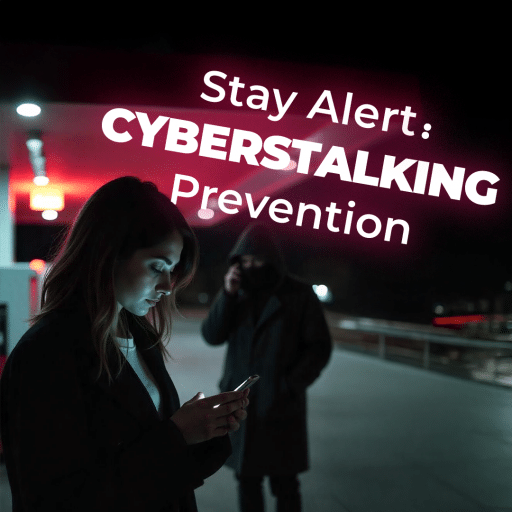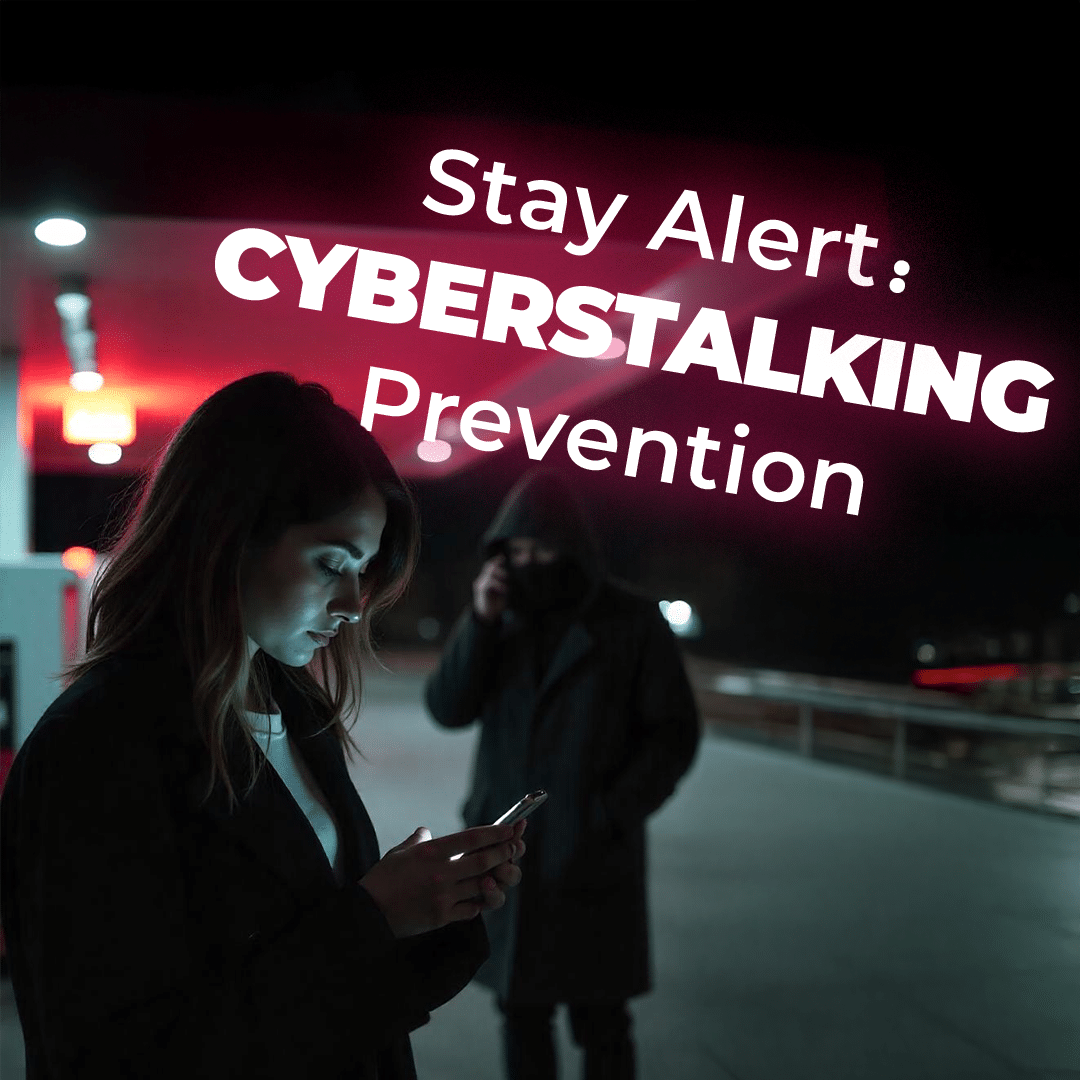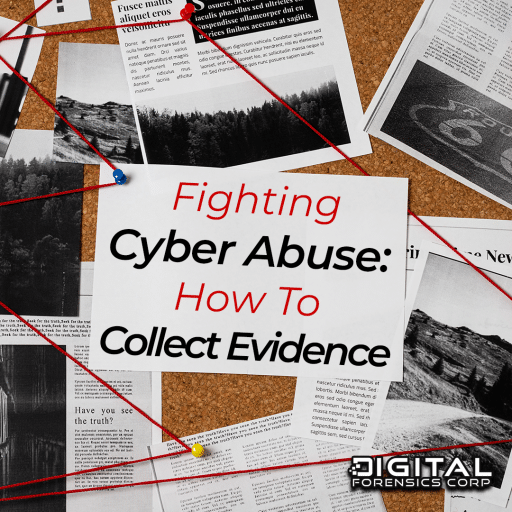They watch your stories, comment anonymously, and seem to know where you’ve been, even though you’ve blocked them. That’s not a coincidence. It’s a form of cyber harassment called cyberstalking. In the digital era, anyone can be a victim of cyberstalking. Perpetrators of the crime utilize the same everyday devices and social media platforms that we all use.
Online stalking often mirrors real-world stalking behavior with victims feeling emotional distress and a powerlessness to stop the cyberstalking themselves. In fact, the Department of Justice found that less than a third of stalking victims report the crime to the police and the number may be even less for victims that need online stalking help(1).
Many online stalkers also use cyber anonymity to protect themselves from any consequences. As a victim of online stalking, it’s only natural to be scared. There are a lot of unknowns and potential dangers in the situation. Depending on the case, there may be a lot of limitations to how law enforcement can provide online stalking help as well. However, at Digital Forensics Corp., we help all victims to the best of our ability. Our team of digital investigators use advanced technology to gain leverage over the abuser, protect the privacy of victims and ultimately, stop the cyberstalking before it escalates any further.
What Is Cyberstalking?
Many people use the terms cyberstalking and cyber harassment interchangeably. However, there are nuances that differentiate them. Cyberstalking is the repeated use of communications technology to monitor, make threats, intimidate, or harass. On the other hand, cyber harassment is a broader term that refers to the use of technology in general to harm an individual. This can include doxxing, blog posts, videos, cyber bullying, and online stalking.
More Than Just Unwanted Attention
A common misconception about cyberstalking is that there is minimal risk since the behavior stays online. However, the reality is that cyberstalking is more than just unwanted attention that you can ignore or block. There is targeted and persistent online behavior like unwanted messaging or GPS tracking that can cause emotional distress or fear. Online stalking can also escalate into real-world stalking behavior. In fact, eighty percent of all stalking victims reported their perpetrator using technology(2).
Where It Happens
The modern era presents many opportunities for online stalkers to monitor and contact victims. Social media is, of course, a huge space for cyberstalking. Perpetrators may discover targets on the platform or will monitor a victim’s activity. Social media can also provide stalkers with information that they can use against the victim.
Other platforms that can be used by online stalkers are email, forums, dating platforms, and even workplace communication tools. Although, according to the Rand Institute, text messaging, email, and phone calls were the most prevalent technology used by online stalkers in federal cases(3).
How Cyberstalkers Operate
Most online stalkers operate in the shadows to avoid any legal consequences. However, they typically want the target to know that they are being watched. Most in-person victims know their stalkers but with cyberstalking, the possibility of a stranger targeting you is increased exponentially.
The Tools They Use to Hide
There are many tools that online stalkers use to hide their behavior. They may create multiple burner social media accounts to bypass getting blocked or reported. Stalkers also will use fake identities like impersonating a victim’s family or friends on social media. The more tech savvy online stalkers may use VPNs and proxy servers to mask their IP addresses, shielding their identity.

Psychological Tactics
Cyber stalkers will use psychological tactics to intimidate, emotionally destabilize, or manipulate their target. Some perpetrators send constant threats or will make the victim feel watched. They will also gaslight the victim, blaming them for the situation or minimizing it.
In certain scenarios where there was a prior relationship, a stalker may love bomb the victim and follow it up with aggressive threats. It’s common for people to stalk their former partners and that leads to a lot of alternating between affection and abuse.
Warning Signs That You’re Being Cyberstalked
Online stalking can go on for years without victims knowing. It takes time to identify a pattern of persistent and unwanted behavior. In some cases, there may be spyware that allows stalkers to monitor the victim through their phone or computer. These are some red flags to look for when it comes to cyberstalking.
- Receiving messages from multiple unknown accounts. Receiving a message on social media from an unknown account every once in a while isn’t peculiar. However, if there is a pattern of messages sent from different unknown accounts, it may be a sign of a stalker.
- Anonymous comments referencing private or real-life details. Anonymous comments or messages that include information that is not available online like where you’ve been today, or a recent purchase should be documented.
- Consistent watching or interacting with every online post. Make use of pattern recognition and take a closer look at who is interacting with your online posts. You may be able to notice a user who is consistently and quickly watching everything you post.
- Attempts to contact you through alternate means after being blocked. Blocking people online is normal. However, if that person creates an alternate account or attempts to contact you on another platform, that’s a warning sign of obsessive behavior.
Escalation Patterns
Cyberstalkers will often begin as an online lurker or a person on a dating platform and they gradually become more fixated on a person over time. They can go from being a passive follower to making comments then sending messages and making threats. However, online stalkers don’t just start as obsessive predators. There is typically a gradual escalation.
The Emotional and Physical Toll of Cyberstalking
The threat of cyberstalking is not just digital. There is a physical and emotional toll to constantly being watched and harassed. Unfortunately, it’s common for cyberstalking to be taken less seriously than in-person stalking. However, sixty seven percent of all stalking victims feared being harmed or killed(4).
Why It’s More Than “Just Online”
Cyberstalking can create ongoing fear, anxiety, and paranoia that can last years. The threat of being watched by a dangerous individual can interrupt daily routines and even damage relationships. This can lead to mental health challenges or constant anxiety that can provoke already existing mental health issues.
When It Crosses the Line
There is a scale of danger when it comes to cyberstalking. Some cases are less serious than others and with an anonymous perpetrator, it can be difficult to understand their intentions. However, there is a line. When online stalkers begin making threats to harm or harass you or your family, it’s time to ask for professional online stalking help. They may also threaten to expose private information or explicit images of the victim to humiliate them.

How Digital Forensics Corp. Stops Cyberstalkers
Online stalkers use cyber anonymity to gain leverage over their victims. That’s why our objective at Digital Forensics Corp. is to target and remove their cyber anonymity, giving victims the ability to take legal action against them. Using IP tracking, metadata analysis, and more, we have a team of cybersecurity experts that can track the digital footprint of perpetrators and identify a pattern of suspicious behavior across platforms.
Our digital investigation is admissible as evidence and can help stop cyber harassment through legal protections. We specialize in giving the victims the leverage against their abuser and stopping the cyberstalking in its tracks.
Steps You Can Take Today to Protect Yourself
Whether you have an online stalker or not, you can take steps to protect yourself. The first step is to lock down all social media profiles. Change your privacy settings and make sure only friends or followers can see your posts. You also need to enable two-factor authentication everywhere it’s applicable.
Tech savvy stalkers may try to hack into your accounts which can lead to private information being exposed. Most importantly, document every message or interaction with the stalker. Having sufficient evidence is essential to be able to take legal action and ultimately, stop the cyberstalking happening to you.
Don’t Engage, But Don’t Ignore
If you have a current cyberstalker, you need to take immediate steps to protect yourself. Stalkers are persistent. However, catching onto the warning signs early enough and taking action, may be enough to deter them. Here are a few steps you can take to stop cyberstalking before it progresses.
- Block, mute, and report. Preserve all contact. Blocking and reporting the stalker is important. However, the messages and interactions they had with you are just as valuable. Digital investigators can use these interactions to trace the perpetrator’s online footprint. Make sure to document the messages and take screenshots to preserve all evidence.
- The more data you have, the better DFC can investigate. Collect as much information as possible for the police or a cybersecurity firm. Insufficient evidence can make it difficult to receive professional online stalking help.
- Trust your gut, early intervention stops cyberstalking escalation. Online stalkers typically develop an obsession over time. If you seek online stalking help early enough, you may be able to avoid the situation escalating into something more serious.
Final Thoughts: You Don’t Have to Live in Fear
No one should live under the threat of harm or violence. The constant paranoia and fear can be overwhelming. You didn’t invite this behavior, and you’re not overreacting. You deserve to feel safe again.
Stalkers thrive in silence and fear, but Digital Forensics Corp. specializes in cutting through that veil of cyber anonymity. Contact us today if you want online stalking help from digital experts.
Sources:
- https://bjs.ojp.gov/content/pub/pdf/sv19.pdf
- https://www.safehome.org/data/cyberstalking-statistics/#references
- https://www.rand.org/content/dam/rand/pubs/research_reports/RRA2600/RRA2637-1/RAND_RRA2637-1.pdf
DISCLAIMER: THIS POST IS FOR INFORMATIONAL PURPOSES ONLY AND IS NOT TO BE CONSIDERED LEGAL ADVICE ON ANY SUBJECT MATTER. DIGITAL FORENSICS CORP. IS NOT A LAWFIRM AND DOES NOT PROVIDE LEGAL ADVICE OR SERVICES. By viewing posts, the reader understands there is no attorney-client relationship, the post should not be used as a substitute for legal advice from a licensed professional attorney, and readers are urged to consult their own legal counsel on any specific legal questions concerning a specific situation.






